| << Chapter < Page | Chapter >> Page > |
To see the evolution of a star cluster in a dwarf galaxy, you can watch this brief animation of how its H–R diagram changes.
[link] is a photograph of NGC 3293, a cluster that is about 10 million years old. The dense clouds of gas and dust are gone. One massive star has evolved to become a red giant and stands out as an especially bright orange member of the cluster.
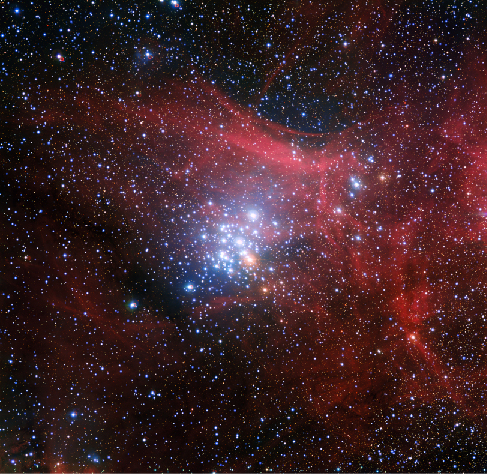
[link] shows the H–R diagram of the open cluster M41, which is roughly 100 million years old; by this time, a significant number of stars have moved off to the right and become red giants. Note the gap that appears in this H–R diagram between the stars near the main sequence and the red giants. A gap does not necessarily imply that stars avoid a region of certain temperatures and luminosities. In this case, it simply represents a domain of temperature and luminosity through which stars evolve very quickly. We see a gap for M41 because at this particular moment, we have not caught a star in the process of scurrying across this part of the diagram.
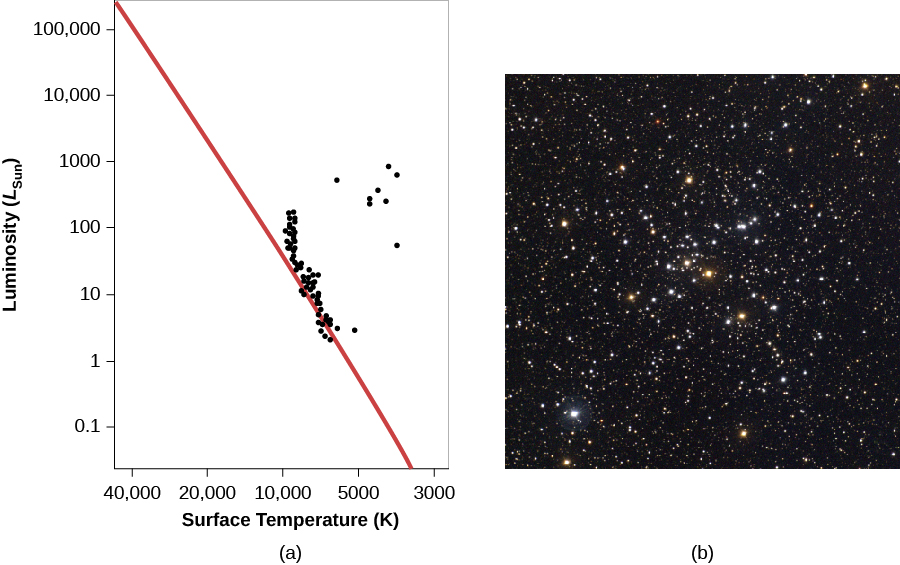
After 4 billion years have passed, many more stars, including stars that are only a few times more massive than the Sun, have left the main sequence ( [link] ). This means that no stars are left near the top of the main sequence; only the low-mass stars near the bottom remain. The older the cluster, the lower the point on the main sequence (and the lower the mass of the stars) where stars begin to move toward the red giant region. The location in the H–R diagram where the stars have begun to leave the main sequence is called the main-sequence turnoff .
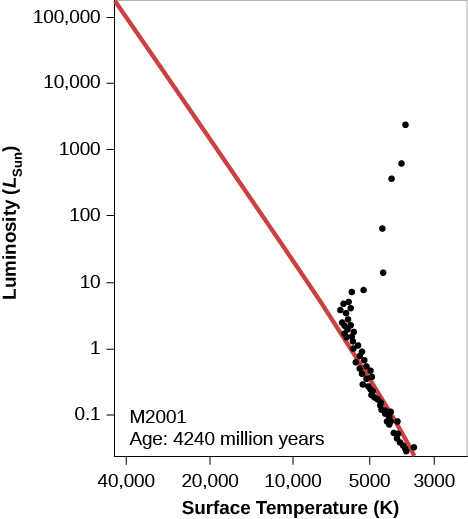
The oldest clusters of all are the globular clusters. [link] shows the H–R diagram of globular cluster 47 Tucanae. Notice that the luminosity and temperature scales are different from those of the other H–R diagrams in this chapter. In [link] , for example, the luminosity scale on the left side of the diagram goes from 0.1 to 100,000 times the Sun’s luminosity. But in [link] , the luminosity scale has been significantly reduced in extent. So many stars in this old cluster have had time to turn off the main sequence that only the very bottom of the main sequence remains.
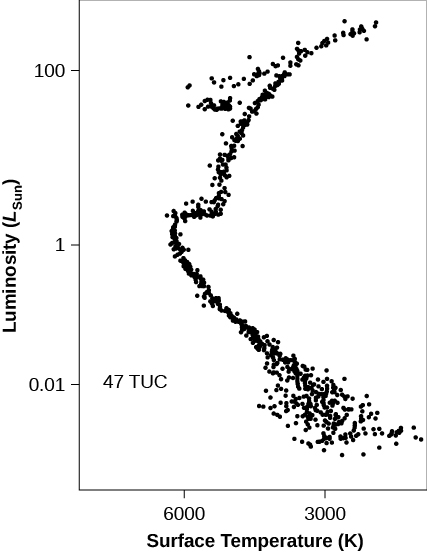
Check out this brief NASA video with a 3-D visualization of how an H–R diagram is created for the globular cluster Omega Centauri.
Just how old are the different clusters we have been discussing? To get their actual ages (in years), we must compare the appearances of our calculated H–R diagrams of different ages to observed H–R diagrams of real clusters. In practice, astronomers use the position at the top of the main sequence (that is, the luminosity at which stars begin to move off the main sequence to become red giants) as a measure of the age of a cluster (the main-sequence turnoff we discussed previously). For example, we can compare the luminosities of the brightest stars that are still on the main sequence in [link] and [link] .
Using this method, some associations and open clusters turn out to be as young as 1 million years old, while others are several hundred million years old. Once all of the interstellar matter surrounding a cluster has been used to form stars or has dispersed and moved away from the cluster, star formation ceases, and stars of progressively lower mass move off the main sequence, as shown in [link] , [link] , and [link] .
To our surprise, even the youngest of the globular clusters in our Galaxy are found to be older than the oldest open cluster. All of the globular clusters have main sequences that turn off at a luminosity less than that of the Sun. Star formation in these crowded systems ceased billions of years ago, and no new stars are coming on to the main sequence to replace the ones that have turned off (see [link] ).
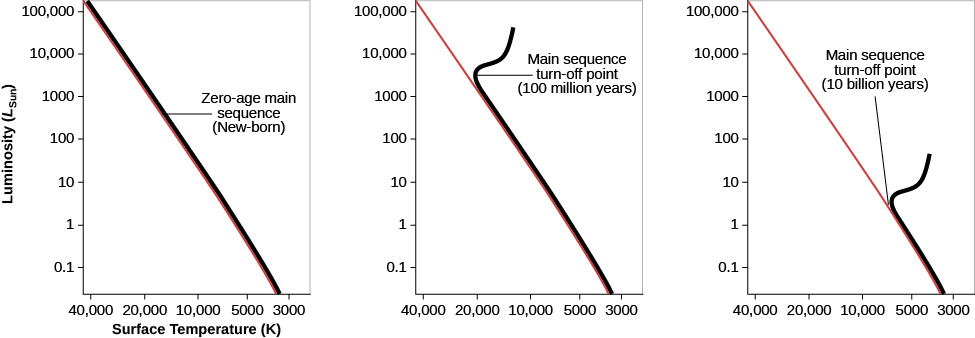
Indeed, the globular clusters are the oldest structures in our Galaxy (and in other galaxies as well). The youngest have ages of about 11 billion years and some appear to be even older. Since these are the oldest objects we know of, this estimate is one of the best limits we have on the age of the universe itself—it must be at least 11 billion years old. We will return to the fascinating question of determining the age of the entire universe in the chapter on The Big Bang .
The H–R diagram of stars in a cluster changes systematically as the cluster grows older. The most massive stars evolve most rapidly. In the youngest clusters and associations, highly luminous blue stars are on the main sequence; the stars with the lowest masses lie to the right of the main sequence and are still contracting toward it. With passing time, stars of progressively lower masses evolve away from (or turn off) the main sequence. In globular clusters, which are all at least 11 billion years old, there are no luminous blue stars at all. Astronomers can use the turnoff point from the main sequence to determine the age of a cluster.

Notification Switch
Would you like to follow the 'Astronomy' conversation and receive update notifications?